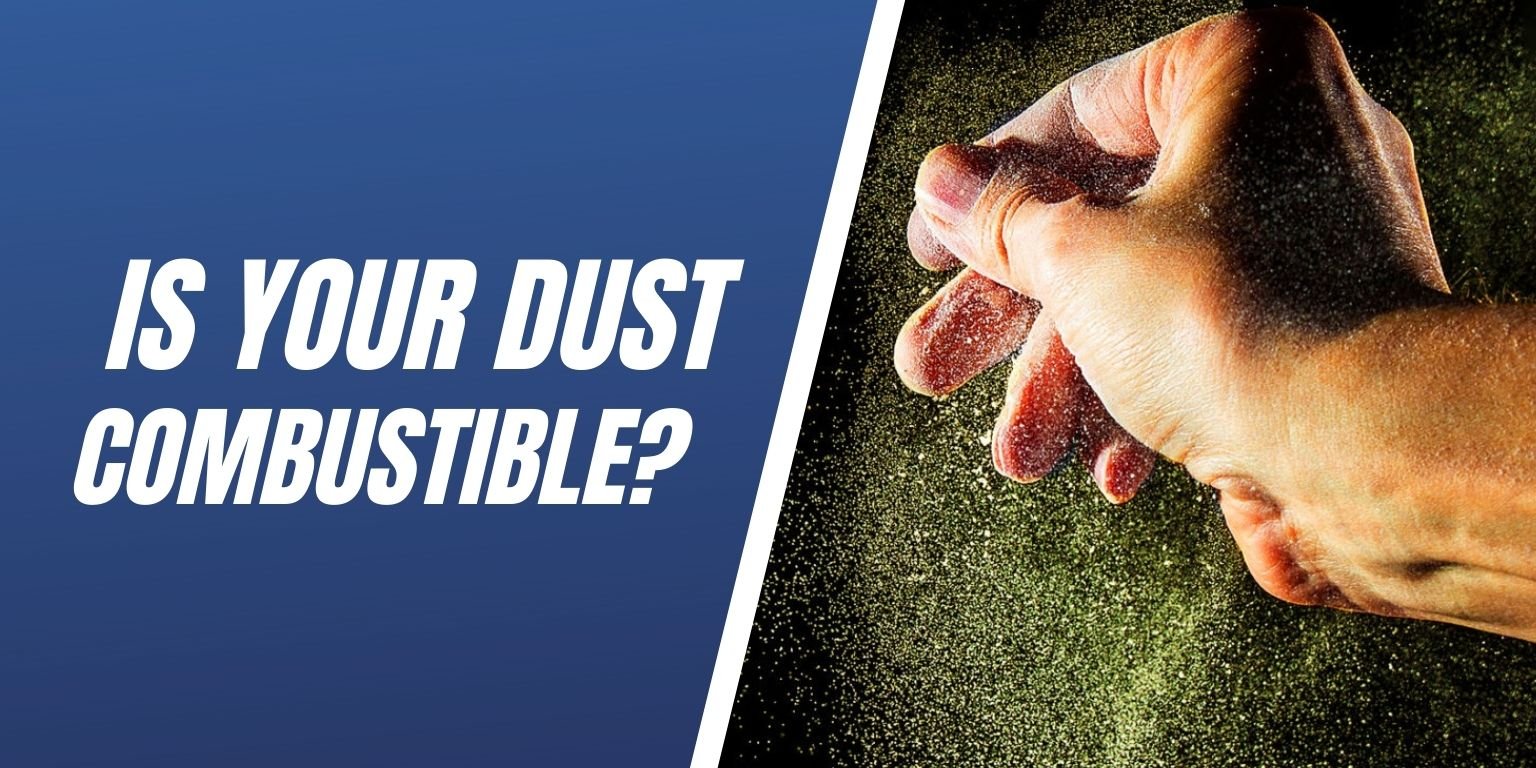
Combustible Dust is a hot topic! However, what is so surprising is there are still many facilities who are a ticking time bomb, but think they are safe from an explosion. All too often when our technicians visit a facility, the managers and workers think their dust isn’t combustible dust. Unfortunately, the dust they thought was harmless is actually very combustible and is creating a hazard.
What Is Combustible Dust?
NFPA 654 defines combustible dust as “A combustible particulate solid that presents a fire or deflagration hazard when suspended in air or some other oxidizing medium over a range of concentrations, regardless of particle size or shape.”
Below is a list about the different types of materials that create dust that is highly combustible
- Wood and Sawdust
- Plastics and Rubbers
- Coal and other Fossil Fuels
- Sugars, Grains and Food
- Paper
- Textiles (cotton and nylon)
- Metals (iron, aluminum, zinc chromium and magnesium)
- Chemicals
How Does A Dust Explosion Occur?
According to the Occupational Health and Safety Administration (OSHA), “A dust explosion occurs when a confined and concentrated combustible dust cloud comes into contact with an ignition source. A primary explosion is the first point where an explosion occurs and is often an isolated incident. A secondary explosion occurs when the primary explosion pressure disturbs dust that has collected in the workplace, resulting in a much more extensive explosion.”
There are five elements that are needed in order for a combustible dust explosion to happen – dust, oxidant, dispersion, confinement and ignition. As many of you may already know, surfaces start out clean and free of any combustible dust. Throughout the manufacturing process, dust begins to collect on the floor, machinery and even on high surfaces. The empty space of the building is full of an oxidant, which is typically oxygen. Something then disrupts the dust, dispersing it into a dust cloud. Since the dust cloud is contained within the walls of the building, an ignition source is created within reach of the dust cloud, causing it to ignite and create an explosion.
Combustible Dust Remediation
Knowing how to properly clean combustible dust is important not only for the safety of you and your employees, but in also preventing future dust explosions.
- Appropriate Safety Gear - Making sure that wearing safety gear while cleaning combustible dust is an important part of cleaning combustible dust. Using the proper PPE gear will help to ensure the health and safety of the individual who is removing the dust.
- Right Safety Equipment - There are only a few vacuums that are safe to use when cleaning combustible dust. Many dust collection systems just blow the dust around and keep it in the air, trying to have it eventually move into a collection area, but these cause hazards by creating an explosive dust cloud and making the air quality lower. Other dust collection systems do actually suck in and filter the air, but this causes dust to settle in the ductwork leading to the collection system. If the collection area becomes full, the dust can begin blowing backwards out of the vents, making the situation worse than before, and in the case of a fire the dust acts like a fuel, letting the fire travel throughout the building.
- Proper Training and Certification - In OSHA’s Combustible Dust National Emphasis Program, two of the most common citations were improper housekeeping, including combustible dust accumulation, and use of compressed air to blow down combustible dust. Having the proper training for cleaning combustible dust is one of the most important parts of cleaning combustible dust. Technicians should be trained in OSHA’s 10- or 30-hour Safety, Aerial Lifts, Confined Spaces, First Aid, CPR, and Combustible Dust Safety and Awareness.
Hughes Environmental has performed combustible dust cleaning in a wide array of facilities throughout the United States and has dealt with many types of combustible dust. Our technicians are OSHA-trained and experienced in cleaning combustible dust. Hughes Environmental uses equipment approved for combustible dust cleaning, such as intrinsically safe vacuums and grounded hoses.
Many times the greatest danger is the one that goes unnoticed, and combustible dust hazards are a severe danger that is often ignored. If you have questions about Combustible Dust Remediation Contact Us Here or call 888.845.3952

